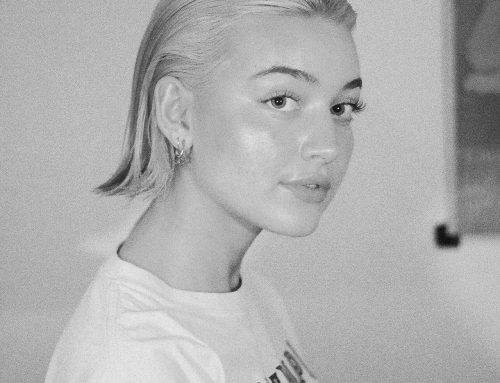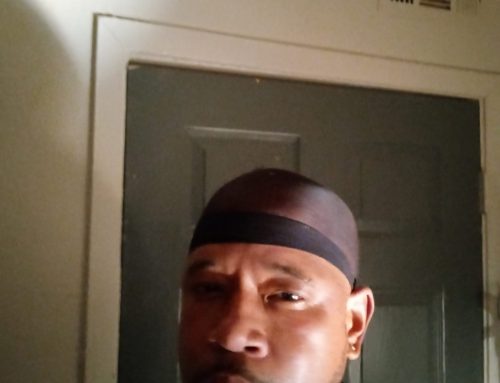Dangerous Diagnoses – Aaron J Smith
I’m dangerous.
I’m a rage-filled monster who could snap at any moment, hurting those close to me. I’m primed to lash out at friend, family, or stranger. My anger is just below the surface, bubbling, and boiling, threading at any moment to take over and turn me into a raging hulk.
At least that’s what some people think when I tell them my diagnosis. Bipolar rage is dangerous and volatile, unpredictable and uncontrollable. Stigma, stories, pop-psychology, and prejudice file this idea. Movies like “Silver Linings Playbook” depict people with bipolar as capable of extreme violence at small provocations.
The truth is, while I do deal with anger and irritability as part of my illness, I’m not violent, volatile, or rage-filled and ready to snap. I can’t speak for others with their diagnosis, but I am not a danger to other people, especially when I am regulated, properly medicated, and in therapy. Not that these things are keeping my rage at bay, but they help me deal with my emotions in a healthy manner.
Oh, and there is no rage in this mind.
People believe that “severe” mental illnesses are dangerous. Things like schizophrenia, dissociative identity disorder, post-traumatic stress disorder, borderline personality disorder, and (of course) bipolar mood disorder all make people very uncomfortable. They’re not as easy to embrace as depression or anxiety, which are seen as benign illnesses, easily managed and non-interfering with the lives of people around the person with the illness.
None of that is true though.
The truth is, all mental illnesses are complex, life interrupting, and dangerous in their own ways. But never doesn’t a specific diagnosis automatically mean the person is a danger to others or themselves. Yes, situations can arise where a person can become a danger, but it’s not built into a diagnosis.
Just because a mental illness makes you uncomfortable doesn’t make it dangerous or something that needs to be shunned or locked away. We have these lies built into our pop-psychology, entertainment, and urban lore that tell us that mental illness is dangerous, disruptive to an extreme degree and that everything “worse” than depression and anxiety needs to be kept away from society.
There was one time when someone was asking my medical history. I told them that I had bipolar II but was unmedicated. They sort of gasped, got really tense, and asked why not. Telling them I didn’t have insurance did nothing to alleviate their obvious fear. This is just one example of people believing that mental illness is inherently dangerous.
So, why are some illness’ given a pass? Why are they more widely accepted than say schizoaffective disorder or dissociative identity disorder? Why is borderline personality disorder thought of as dangerous while depression and anxiety are seen as benign? Mental illness is mental illness. They manifest in different ways, different symptoms and root causes, but they are all an illness to be treated. So why are depression and anxiety more widely accepted, more readily talked about, and people are less afraid of them? Why are they “safe diagnosis’s” while the rest of us are unstable, deregulated, and dangerous?
Don’t believe me that this is the case? Let’s take for example a mass shooting. If the perpetrator is a white male, they are always pained as having some sort of mental illness, but it’s never named as clinical depression or an anxiety disorder such as GAD. No, it’s always painted like one of the more “severe” ones: bipolar, schizophrenia, DID. The narrative is spun by the news media so that we believe what the movies tell us: dangerous people have dangerous mental illnesses.
When someone comes out with a mental illness, finally speaking their truth, depression and anxiety are met with compassion and sympathy (if not attempted empathy) while the rest are met with trepidation and some fear. It’s acceptable for a celebrity to boldly proclaim “I live with depression!” or “Anxiety isn’t anything to be ashamed of!” But if a well-known person goes into treatment for a bipolar episode, it’s talked about in a much different way. They’re called straight up crazy. Their behaviors are the brunt of jokes or hushed whispers that wonder if they can ever recover. And then there is the idea that any erratic behavior by someone in the spotlight equates with a “bad” mental illness.
See what I’m talking about.
It’s as if people believe they understand depression and anxiety, while the rest of Pandora’s box is strange and unfamiliar and therefore to be feared. Let me be very clear about this: there are no safe mental illnesses.
I don’t mean that they are dangerous in the way that people suffering from the illness are going to hurt other people in most circumstances. I mean that all mental illnesses are dangerous to the person suffering. There is no benign mental illness.
While “high functioning” depression and anxiety may get a pass in society because they don’t disrupt “normal” life too terribly much, they are both deadly if untreated and left to work their insidious plans.
Depression and anxiety, as much as society wants to believe they understand and can relate, are as complex as borderline personality disorder, bipolar, or schizophrenia. Mental illness is complex. There are no two ways about it.
And here’s a fun little tip: both depression and anxiety can present as irritability and anger. It’s a case by case basis, but one thing remains true: any mental illness is never inherently dangerous to other people. However, every mental illness is dangerous if not deadly to the person living with it. Self-harm and suicide are very real expressions of mental illness. That’s why we seek treatment, medication, therapy. But, for the most part, the regular experience of living with mental illnesses (whether society considers them “safe” or not) is not one of trying to contain rage so we don’t lash out to hurt other people. We don’t seek to make others suffer because we ourselves are suffering. We don’t lose cognitive functions, blacking out only to come to with smoking guns and bloody knuckles.
If you want to know the dangers of mental illness know it’s when the darkness swallows us up when we can’t move for the weight of depression sits on us like some medieval demon to steal our soul. The danger is when the panic consumes us, paralyzing us, making us cower, shake, and tremble with fear while we sweat out our adrenalin. It’s when psychosis twists our reality, inserting paranoia and hallucinations into our brains. It’s mania throwing off our inhibitions and logic and tempting us with a shiny world that we would gladly burn to the ground in pursuit of.
This is where the danger of mental illnesses lies.
Don’t fear my rage, my anger, my volatility. It’s made up, a boogeyman, a specter. Don’t assume that because that person “only” has depression that they are safer than me living with bipolar. We both are in danger, and neither one of us are guaranteed to hurt you.
So, let’s stop letting depression and anxiety get a pass in society and begin to embrace all mental illness as something to be treated, tended to, and talked about openly. Remove the shame and stigma surrounding not just a few but all diagnosis.
Aaron J Smith is a father, writer, nerd, and coffee drinker. He hates writing about himself. It’s the worst. He lives with bipolar II and fiercely believes in mental health advocacy to remove stigma and shame associated with mental illness. He also likes cats. Aaron lives in the Pacific Northwest with his two kids.He has been featured on several promenade websites and published anthologies. You can find him at Culturalsavage.com and on Twitter @CulturalSavage.







Leave A Comment